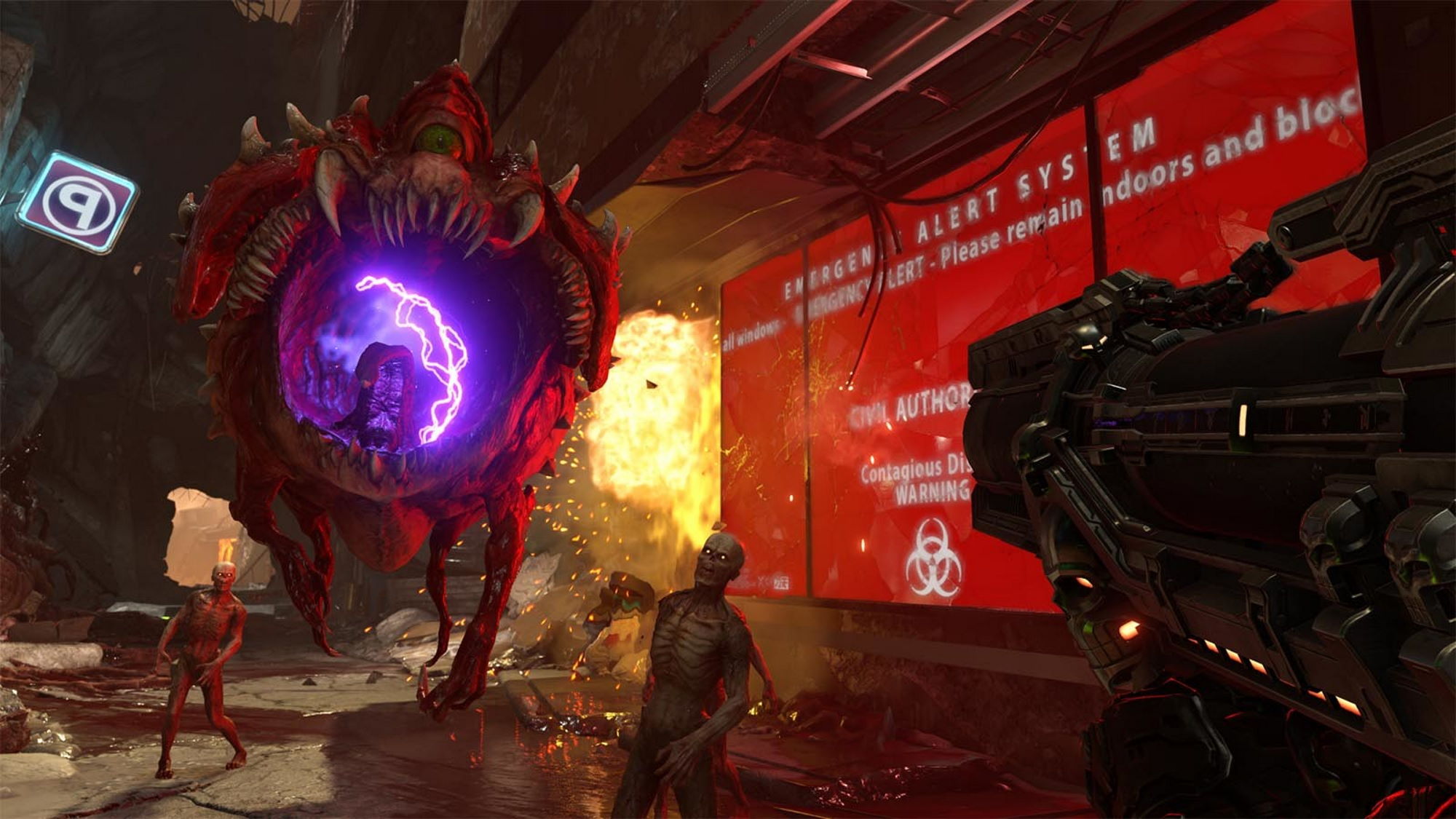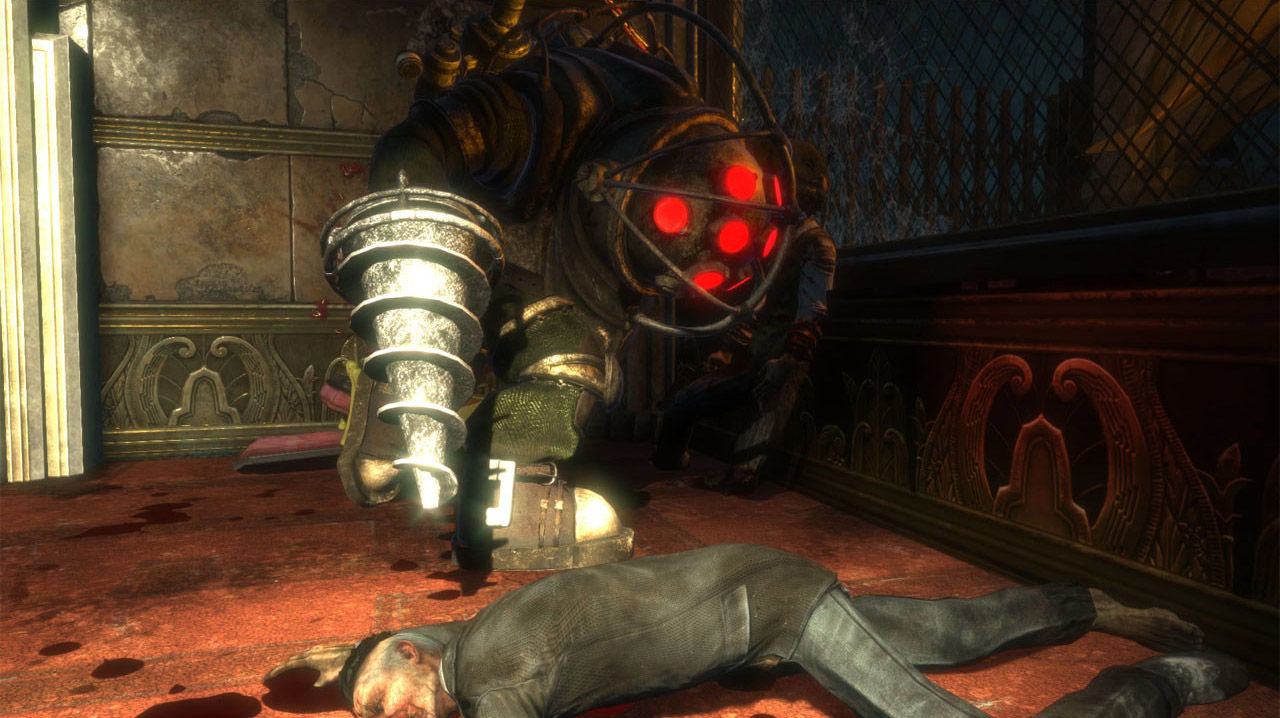HDR brings new life to PC gaming
The first time I moved from 1080p to 4K, my eyes widened at the crisp, alias-free images. The first time I experienced high refresh rates, I was blown away by the butter-smooth motion. And now that I've experienced true HDR on PC, I’m convinced it’s the next graphics frontier that every player needs to see to believe.
I've been drawn to gaming ever since I was a little kid, primarily for its ability to take me to any world imaginable — from the realistic battlefields of Call of Duty: Modern Warfare to the fantastical realm of Middle-Earth. I can take to the stars, dive into a teeming metropolis underwater, or venture into the bowels of hell itself. And with modern graphics chips inside powerful PCs, we gamers can view these worlds through better lenses than ever. But even those high-powered graphics chips are limited by the color and contrast capabilities of our monitors.
Typical edge-lit displays can look excellent, but they have one major shortcoming: they can’t show true black, since there’s always a backlight shining through the “black” pixels. As a result, black can sometimes look more like dark grey.
Plus, games and movies have been mastered in Standard Dynamic Range for years, which uses a limited color palette and assumes a rather low level of brightness (about 100-200 nits). You could crank the brightness higher than that, but your blacks would get brighter or “greyer” alongside the whites, so the dynamic range — the difference between the darkest and brightest parts of an image — would still be rather narrow.
Modern display technology changes that. The latest Nebula HDR and Mini LED displays from ROG use a technology called full array local dimming, which allows the backlight to dim or brighten certain parts of the screen independently. That allows deep, inky blacks to coexist alongside bright, detailed highlights in the same scene, making the picture look much better — even in SDR. But it also allows game developers to master their games with a wider range of brightness and color in mind, giving rise to a new standard: HDR, or High Dynamic Range.
 Image source: Gamesplanet
Image source: Gamesplanet
When I first fired up Elden Ring, I was enthralled by its unique, horrifying-yet-beautiful open world. The juxtaposition of its repulsive, twisted monsters with the beautiful, glowing Erdtree was truly something special. But once I flipped HDR on, the world truly came to life. Merchant Kale's campsite burned with a fiery intensity, and the extra brightness afforded by the HDR signal made it pop right off the screen when contrasted with the dark, dying lands surrounding the Church of Elleh.

HDR’s extra brightness isn't just about making images “pop,” though. It also allows for far more detail in bright areas. Driving through the Mexican desert of Forza Horizon 5, for example, doesn’t have many dark areas on the screen in daytime scenes — but the reflection of the bright sun on my blue Corvette burned vividly, while the clouds in the sky showcase more detail than ever before. Where an SDR image might show some white puffs against a blue sky, the same scene in HDR shows every ripple in every cloud, allowing for a more lifelike overall scene.
 Image source: Gamesplanet
Image source: Gamesplanet
This extra brightness can also be combined with a wider color gamut to create more vivid, saturated colors than SDR content is capable of. I originally played Doom Eternal on a high-resolution, high-refresh, standard IPS display — and while it was one of the most intense, heart-pumping gaming experiences I’ve ever had, firing up the game in HDR years later was like re-entering Hell all over again. The flaming heart of my rocket launcher burned brighter, the demonic fires of hell scorched the skies with red-hot fury, and the colorful ammo drops I got from sawing a Revenant in half were more colorful than anything I’d ever seen in a video game before. If you haven’t played Doom Eternal with ray tracing in HDR, you are missing out on something truly special.
 Image source: Gamesplanet
Image source: Gamesplanet
Not every game was made with HDR in mind, but with Microsoft’s addition of Auto HDR to Windows, even classic or casual games can take full advantage of your display too. The neon signs and plasmid powers of BioShock Remastered’s Rapture flare just a bit brighter with Auto HDR turned up, for example. The wacky beans in Fall Guys’ chaotic races are bursting with color, and The Witcher 3’s open world gets a touch more realistic. For more information on setting up this feature, check out our Auto HDR settings guide.
If you’re still using an SDR display, you’ve probably wondered whether HDR is worth it for gaming. I’m here to tell you: it's time to take the leap. For the best possible HDR experience, you’ll want something with VESA’s DisplayHDR 1000 certification, like the ROG Swift PG32UQX, or the Nebula HDR display available on this year’s ROG Strix SCAR 16, ROG Zephyrus M16, or ROG Flow X16. But great HDR can be had on other displays, too. The DisplayHDR 600 Nebula HDR panel on the 2023 Zephyrus G14 actually offers much more than the minimum DisplayHDR 600 spec, thanks to its Mini LED full-array local dimming (which is not present on many DisplayHDR 600 monitors). And while most HDR400 monitors don’t have the same backlight technology, they’ll give a small taste of what HDR has to offer with a bit of extra oomph in bright highlights and a wider color gamut than SDR. No matter what display you ultimately go with, make sure you’re using the best monitor settings and the best HDR settings for your games.
Modern CPUs and GPUs can do wonders, but HDR allows them to truly shine. Now that I’ve experienced the next generation of gaming displays, I never want to go back.


